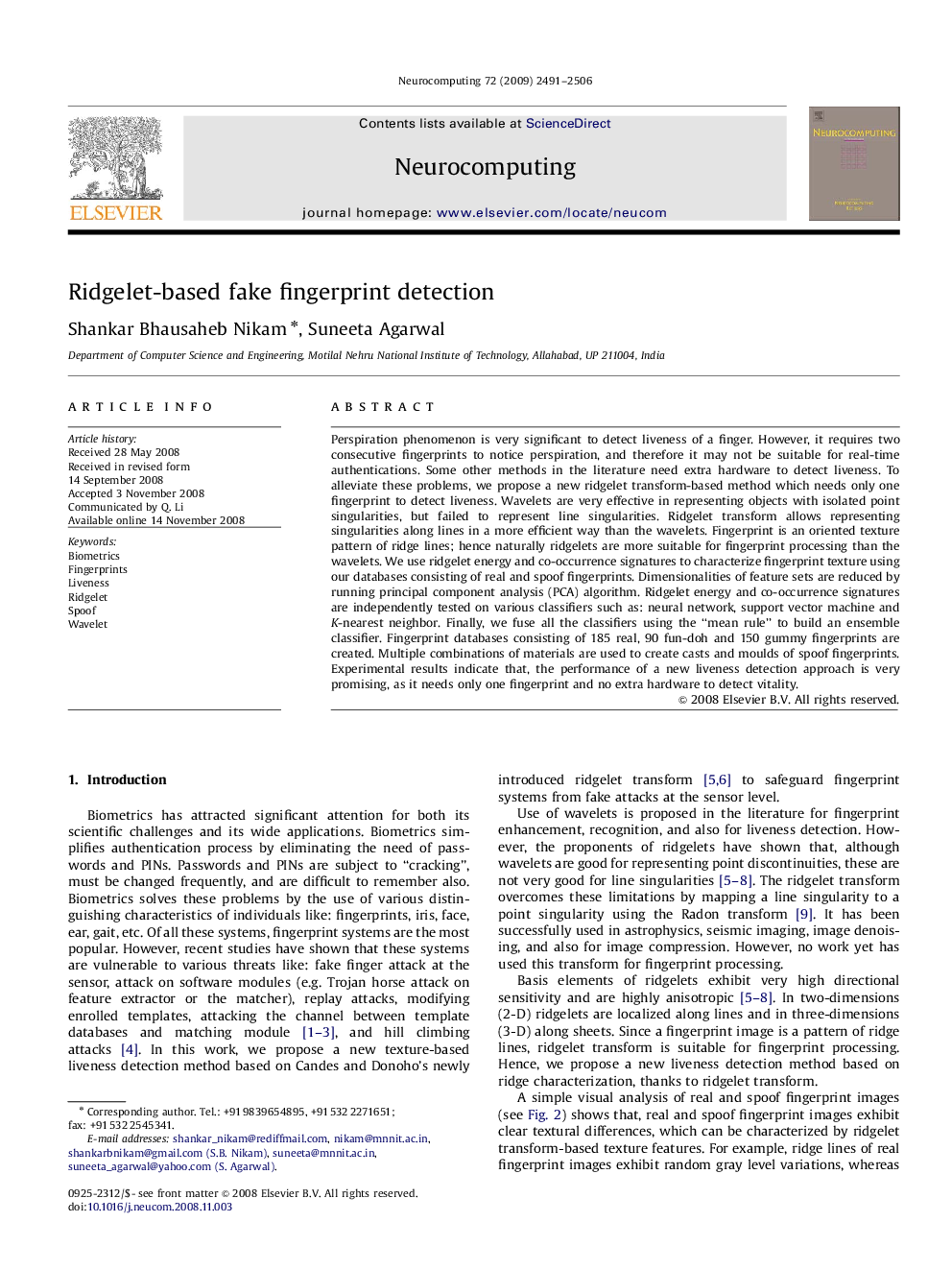| کد مقاله | کد نشریه | سال انتشار | مقاله انگلیسی | نسخه تمام متن |
|---|---|---|---|---|
| 410556 | 679149 | 2009 | 16 صفحه PDF | دانلود رایگان |

Perspiration phenomenon is very significant to detect liveness of a finger. However, it requires two consecutive fingerprints to notice perspiration, and therefore it may not be suitable for real-time authentications. Some other methods in the literature need extra hardware to detect liveness. To alleviate these problems, we propose a new ridgelet transform-based method which needs only one fingerprint to detect liveness. Wavelets are very effective in representing objects with isolated point singularities, but failed to represent line singularities. Ridgelet transform allows representing singularities along lines in a more efficient way than the wavelets. Fingerprint is an oriented texture pattern of ridge lines; hence naturally ridgelets are more suitable for fingerprint processing than the wavelets. We use ridgelet energy and co-occurrence signatures to characterize fingerprint texture using our databases consisting of real and spoof fingerprints. Dimensionalities of feature sets are reduced by running principal component analysis (PCA) algorithm. Ridgelet energy and co-occurrence signatures are independently tested on various classifiers such as: neural network, support vector machine and K-nearest neighbor. Finally, we fuse all the classifiers using the “mean rule” to build an ensemble classifier. Fingerprint databases consisting of 185 real, 90 fun-doh and 150 gummy fingerprints are created. Multiple combinations of materials are used to create casts and moulds of spoof fingerprints. Experimental results indicate that, the performance of a new liveness detection approach is very promising, as it needs only one fingerprint and no extra hardware to detect vitality.
Journal: Neurocomputing - Volume 72, Issues 10–12, June 2009, Pages 2491–2506